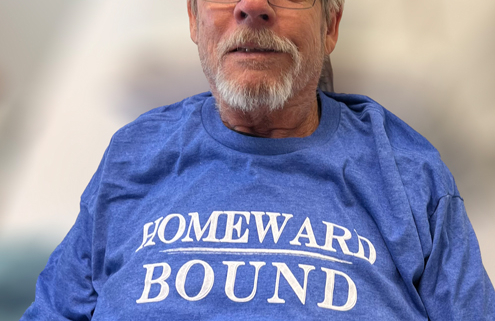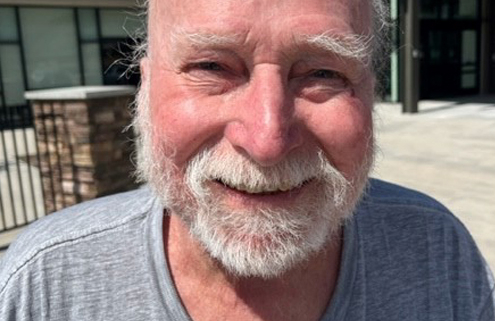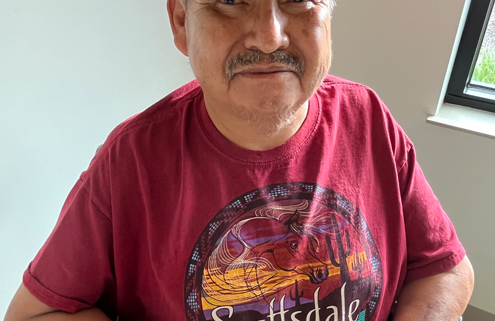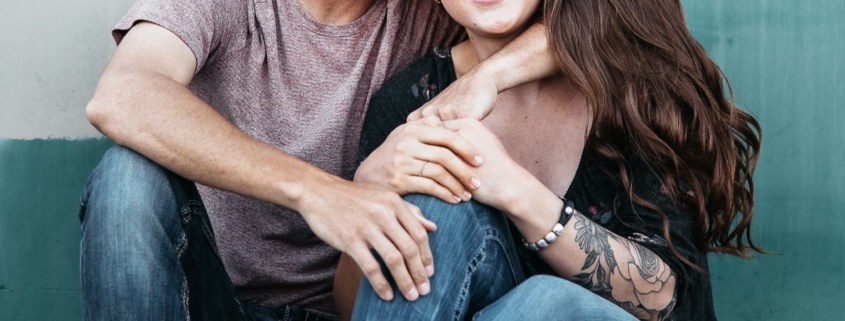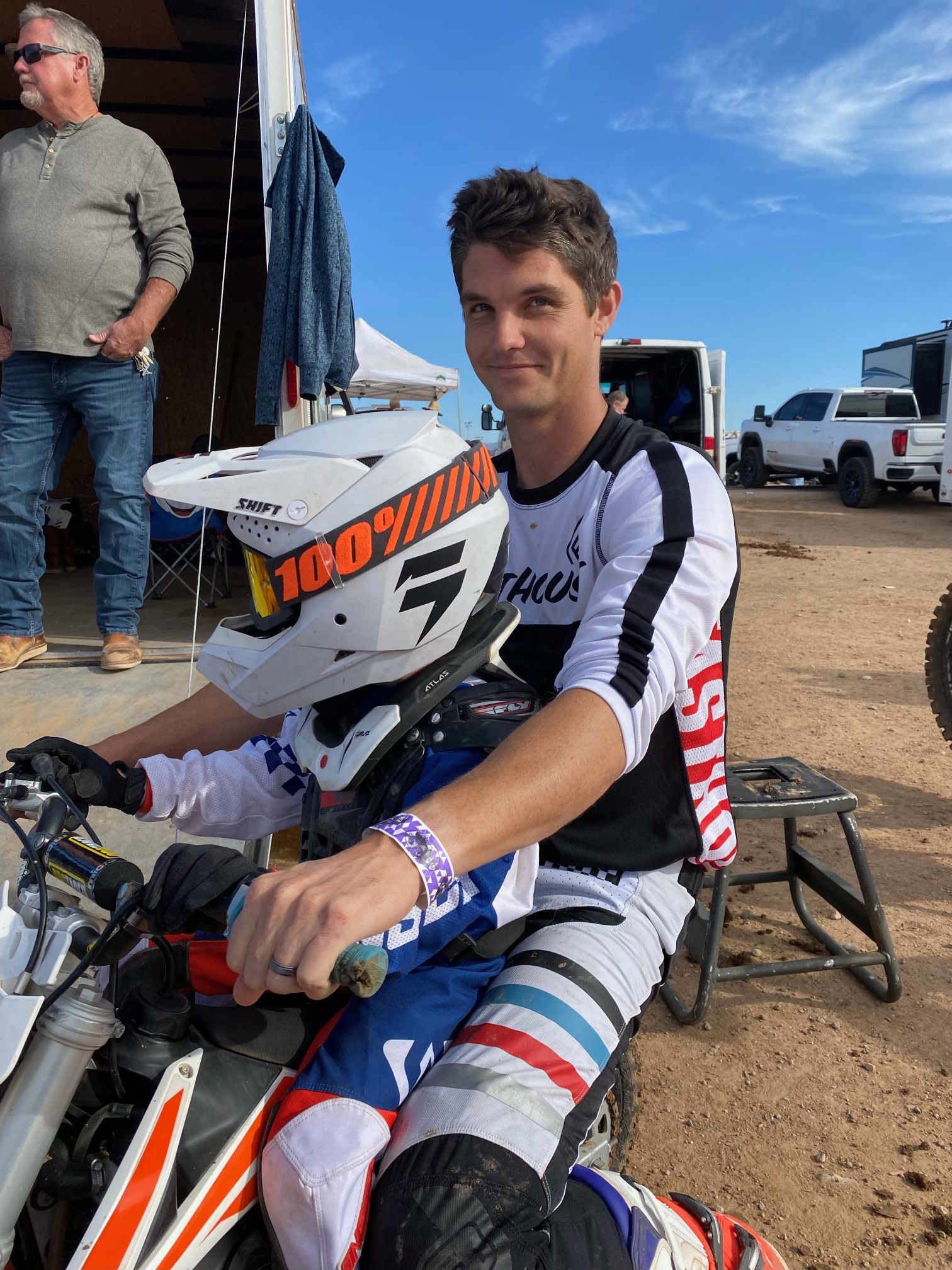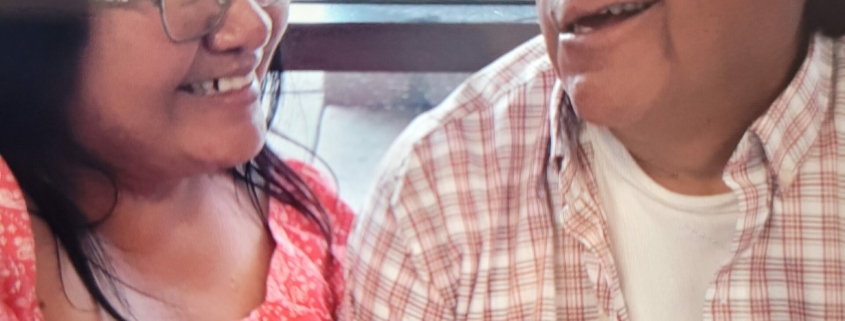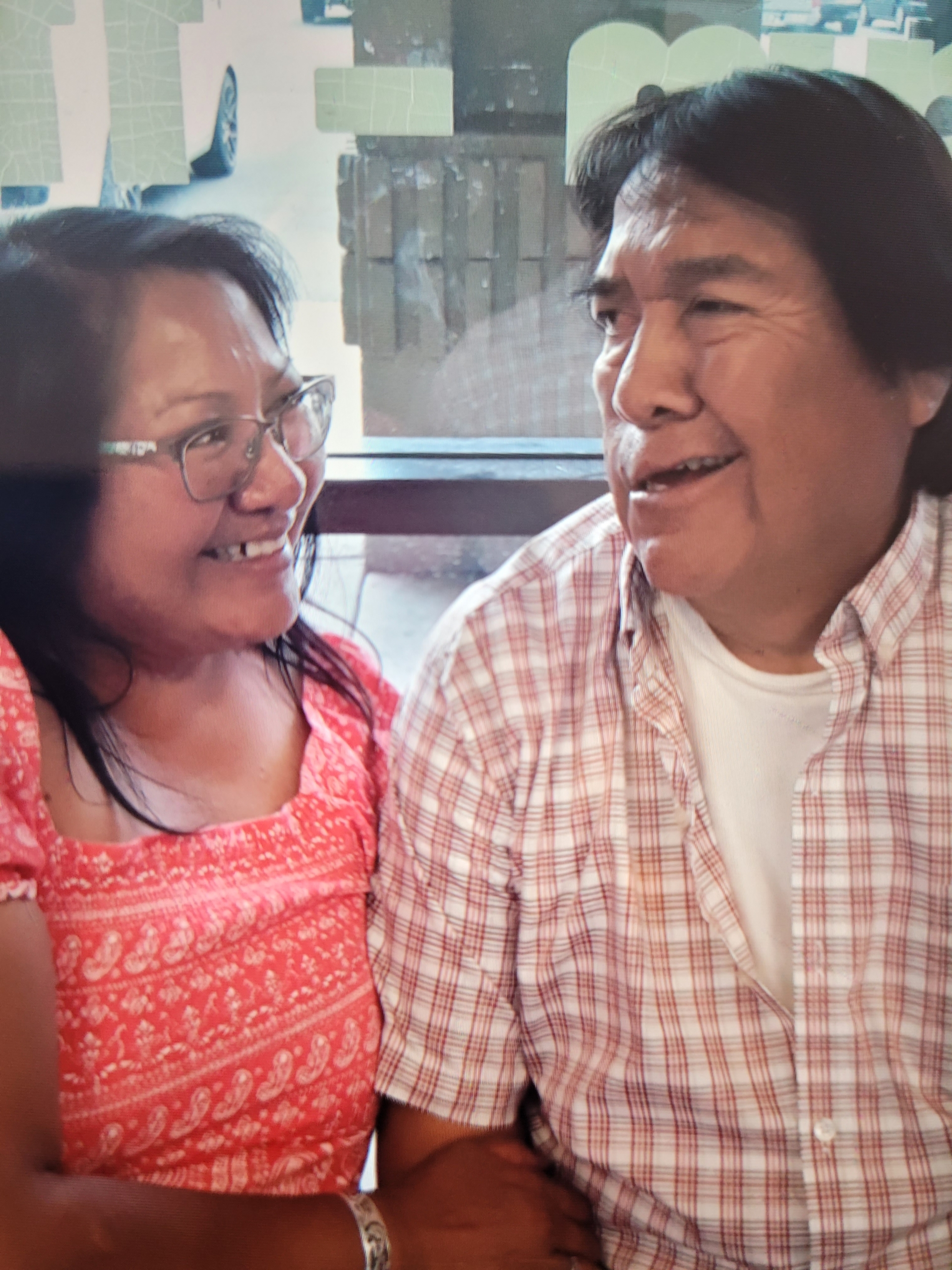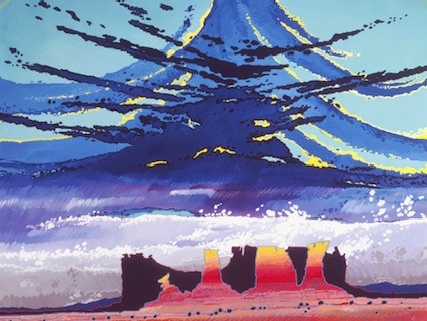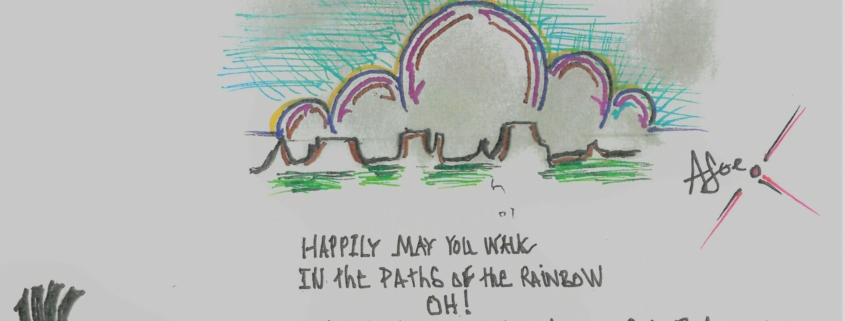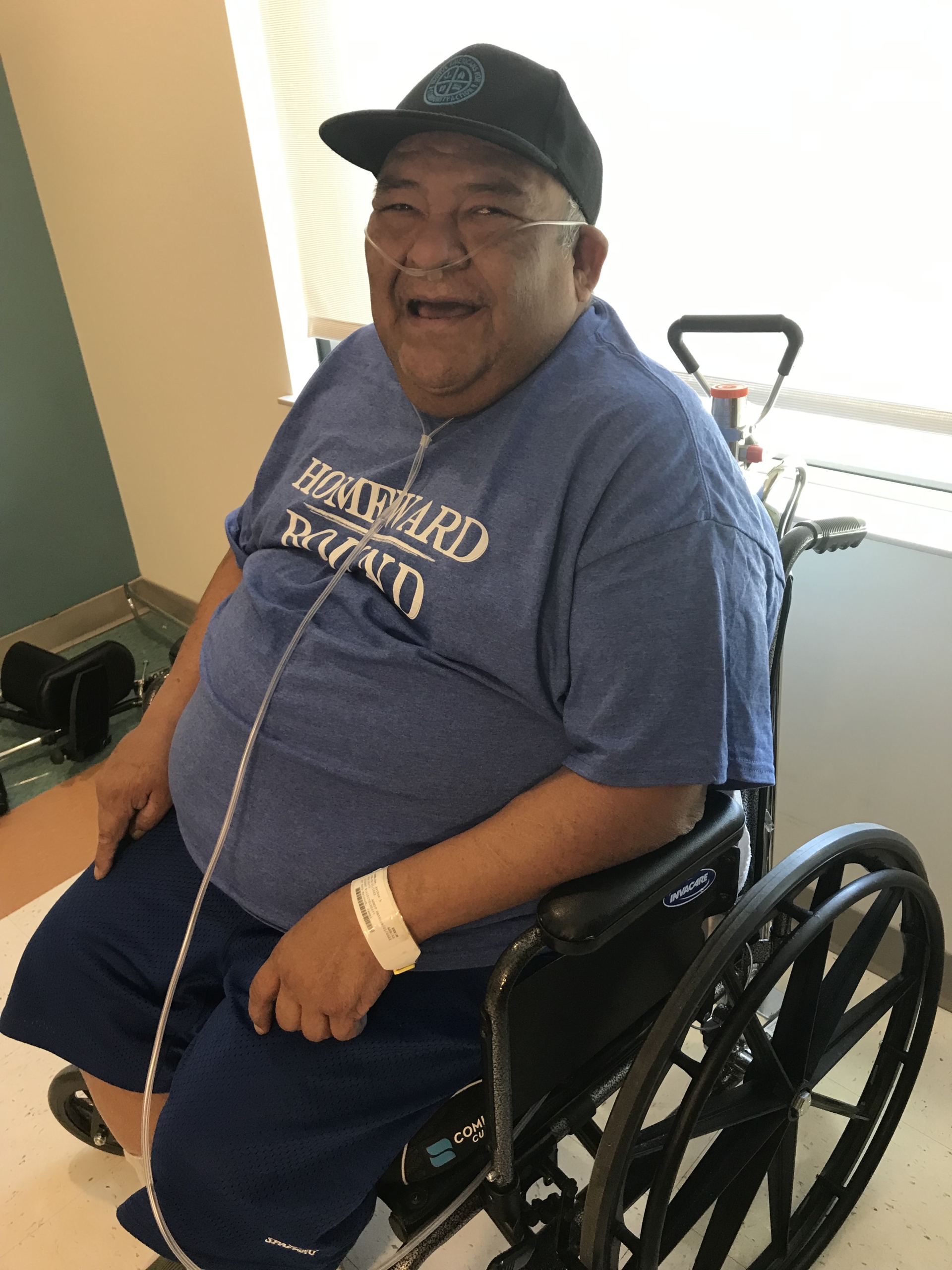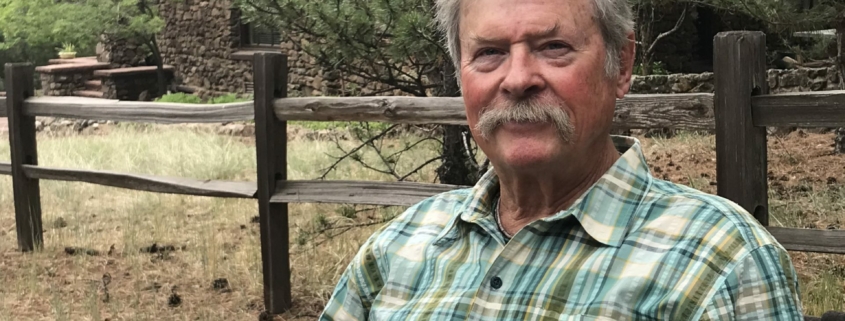Eric was admitted to Rehabilitation Hospital of Northern Arizona (RHNA) for a toxic reaction to a medication that caused loss of muscle control of his legs and right arm, excessive joint swelling, and hallucinations…
One morning, while having coffee with his wife, Suzie, John felt dazed. He recalls going outside and wandering through the gate in his yard, not knowing where he was going…
Victor’s amputations were caused by wounds that were affected by diabetes, which prevented them from healing and caused infections. Last year, Victor was referred to RHNA for rehabilitation following a below-the-knee amputation on his right leg…
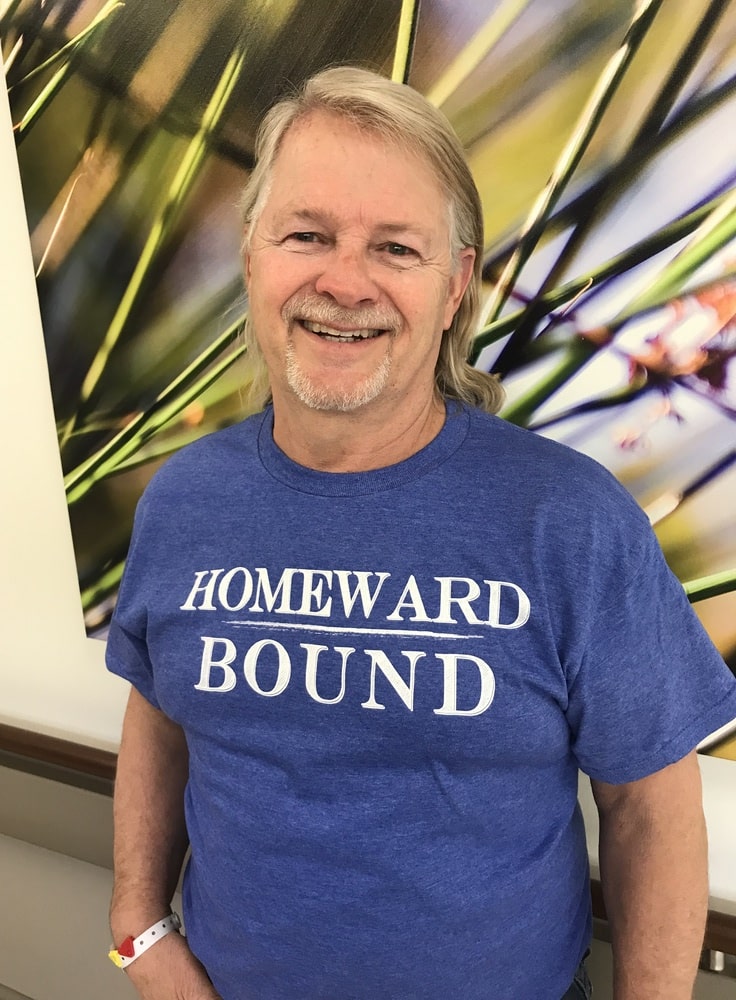
Richard “Rick” Busbea has lived a very active lifestyle. He is twice retired from the United States Air Force, where he worked in information management. Since his retirement, Rick has worked part-time at ACE Hardware. He enjoys golf, gardening, and riding motorcycles. Rick has many projects he is working on around the home, including his newest project, restoring a 1929 Model A that his father passed on to him. In addition, he sings and plays guitar professionally in Sedona and the surrounding area.
One day, Rick went in for a routine visit with his cardiologist for a baseline assessment of his heart condition and underwent a stress test and ultrasound. The cardiologist determined that he needed to go to the Cath Lab for a procedure on his heart. Rick underwent percutaneous intervention of the heart and received a medication for conscious sedation called Versed. Unfortunately, he had an adverse reaction to this medication, and the physician decided to keep Rick in the hospital overnight.
Because he experienced confusion and visual changes, Rick underwent an MRI of his head. The MRI revealed that he had suffered multiple small infarcts, determined to be strokes. “When I woke up, I was blind and could not see anything; this lasted for about one, one-and-a-half days,” Rick said, recalling the challenges he suddenly faced. “I didn’t know who I was or where I was. I had poor word-finding ability and hallucinations. Eventually, my eyesight was returning, but with left-field cut deficits. [For example,] when someone was trying to hand me a cup of water, I could see the cup of water but could not see the person handing me the water. It is a really odd feeling to see objects floating towards you, and you know that someone is handing it to you but cannot see them.”
Read moreColey Todd has always been physically active. He works as an excavator in construction and helps run the family construction business. Throughout his youth, Coley was involved in basketball and motocross. He had stepped away from racing dirt bikes but, in his 30s, picked the sport up again. He considered himself a “weekend warrior” and participated in the Phoenix Motor Cross Series racing dirt bikes. One of those weekend races changed his life.
Coley and his wife, Victoria, shared their recollection of that April day. “I don’t recall much from the accident,” Coley stated. “Or the days at the Phoenix hospital or the first week at Rehabilitation Hospital of Northern Arizona (RHNA). I slept a lot. My wife has had to fill in the missing pieces.”
Victoria, a physical therapist by trade, stated, “He wrecked on a wet track on a jump. I was there, and when I got to him, I saw that he had cracked his helmet. I had a gut feeling there was a head injury. There was an ambulance on the scene, but we had to wait for another ambulance to transport him to the hospital. He didn’t know who I was.”
Read moreKeith Pahovama has always enjoyed his job working as a program manager for the Hopi Tribe. He takes great pride in working with the Hopi Villages in economic development and assisting with obtaining grants that fund the building of community centers. He also assists with coal mine maintenance and obtaining heavy equipment for village projects. In addition to his professional endeavors, Keith enjoys working on his ranch with his family, tending to the cattle.
It was while tending to cattle with his son that Keith’s health began to unravel. Keith and his son were separating cattle on foot. “The cattle backed up, and I was walking backward,” Keith recalled. “I lost my footing and fell backward, landing on my shoulder. I didn’t think I had hit my head. I finished what I was doing and thought I was okay.”
Keith’s wife, Laurinda, tearfully remembered the harrowing weeks that followed. “The following week, he had three different bouts of shaking really bad, and just didn’t seem right. He first went to be evaluated at the clinic. They thought he was having a heart attack and sent him to a facility in Phoenix, and he was discharged the next day. He was so weak and could barely walk. I tried to help him the best I could. I just couldn’t understand why they would discharge him like this. It was so hard.”
Read more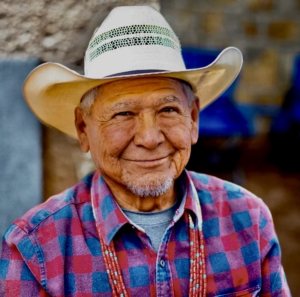
Baje Whitethrone, Sr. has lived a very active lifestyle. A working artist for over forty years, Baje is the author of two children’s books and illustrator of nine children’s picture books. He has also created various pieces of canvased art. Baje said, “I wanted to share my life from the reservation and share stories through my art. There was a lot of learning to make and share the work and make it a small business. With the blessing of my wife and family, I have been able to do that.” In addition to his artwork, Baje remained physically active, running six miles and biking 12 miles a day.
Then, Baje’s health took a downturn.
“My heart was pounding, and I couldn’t breathe,” Baje said, recalling how his journey began. “My son had to call the EMTs, and that’s when they found that I had COVID. While at the hospital, I had a heart attack. I was on a ventilator for a week. I was so debilitated from my illness. My ability to walk and mobility really suffered.”
Extremely weak as a result of his extensive hospitalization, doctors recommended an inpatient rehabilitation stay. Baje turned to Rehabilitation Hospital of Northern Arizona (RHNA) to help him regain his strength and independence. At RHNA, Baje would receive the concentrated therapies he needed to improve the weakness he developed from prolonged illness and the therapy he needed to strengthen his heart.
Read moreArthur Joe found more than just physical rehabilitation at Rehabilitation Hospital of Northern Arizona (RHNA). He found community. Arthur recently admitted to RHNA after undergoing extensive spinal surgery due to malfunctioning hardware.
During his stay at RHNA, a new program called the ‘Patient Led Supportive Discussion Group’ began. The group is a patient-driven group that allows patients to facilitate and participate in the meeting voluntarily. Patients are offered a safe environment to express and share their thoughts and feelings about their experiences related to their medical journey and rehab process. Participants may also listen and not share. All are encouraged to listen with their ears and eyes and not judge or interrupt. What is said in the group remains in the group and is not shared with people outside the group. Nothing is written down, and no patient information is included.
Arthur participated in this discussion group, and his experience prompted him to create a piece of artwork of his takeaways from participating in the group. Arthur explained the components of his artwork and what each part of his drawing means from his perspective.
Read morePatrick Conley describes his life as an “unconventional, nonconforming, entrepreneurial life.”
Patrick has an affinity for the vast landscapes of Arizona, which underlines much of his life. For many years, he has shared his knowledge of the various rock formations of the Grand Canyon, Marble Canyon, and other areas of the state. Since 1969, Patrick has been a river guide on the Colorado River and led expeditions as a wilderness outfitter. His wide-ranging knowledge of the land has even led Patrick to assist with scouting beautiful, scenic locations for Hollywood movies filmed in the state.
Perhaps most significantly, though, is Patrick’s non-profit work, including being one of the founders of Grand Canyon Youth. “Giving back is what life is all about and brings so much joy,” he humbly stated.
However, health issues have recently slowed Patrick’s active lifestyle. He recalls having difficulty walking a couple of years ago, the result of his right hip being “bone on bone.” During a river trip on the San Juan River, Patrick struggled mightily. “I basically had to roll on and off the boat due to my hip. It was so disabling,” he recalled.
Read moreOne of the most joy-filled experiences for our staff occurs when a patient return to visit us on their own two feet. Recently, Shari Lightfoot provided the team at Rehabilitation Hospital of Northern Arizona with such a moment when she stopped by to thank us for the care and education she received.
Before admitting to RHNA, Shari lived a busy, independent life. “I have always been active. Not much could keep me down,” she noted. For most of her life, Shari cared for animals, especially horses. She was a barrel racer and a drill team member, enjoyed ice and roller skating, and participated in jousting. In addition, Shari raised a daughter, whom she assisted with many 4-H projects. “I have even wrestled steer to help with getting them branded,” she added.
One September day, that active lifestyle slowed dramatically while Shari and her husband were horse camping in Happy Jack, Arizona. They had a full but fun day. So when Shari felt a pull in her back later that evening, she assumed that she simply overdid it and that it would pass. After having dinner and playing cards, Shari went to lie down.
Read moreAbout Ernest Health
Rehabilitation Hospital of Northern Arizona is part of Ernest Health, a network of rehabilitation and long-term acute care hospitals. Ernest Health hospitals see patients who are often recovering from disabilities caused by injuries or illnesses, or from chronic or complex medical conditions.Read More
Quick Reference Links
• Contact Us• Career Opportunities at this Hospital
• Price Transparency
• About Ernest Health

